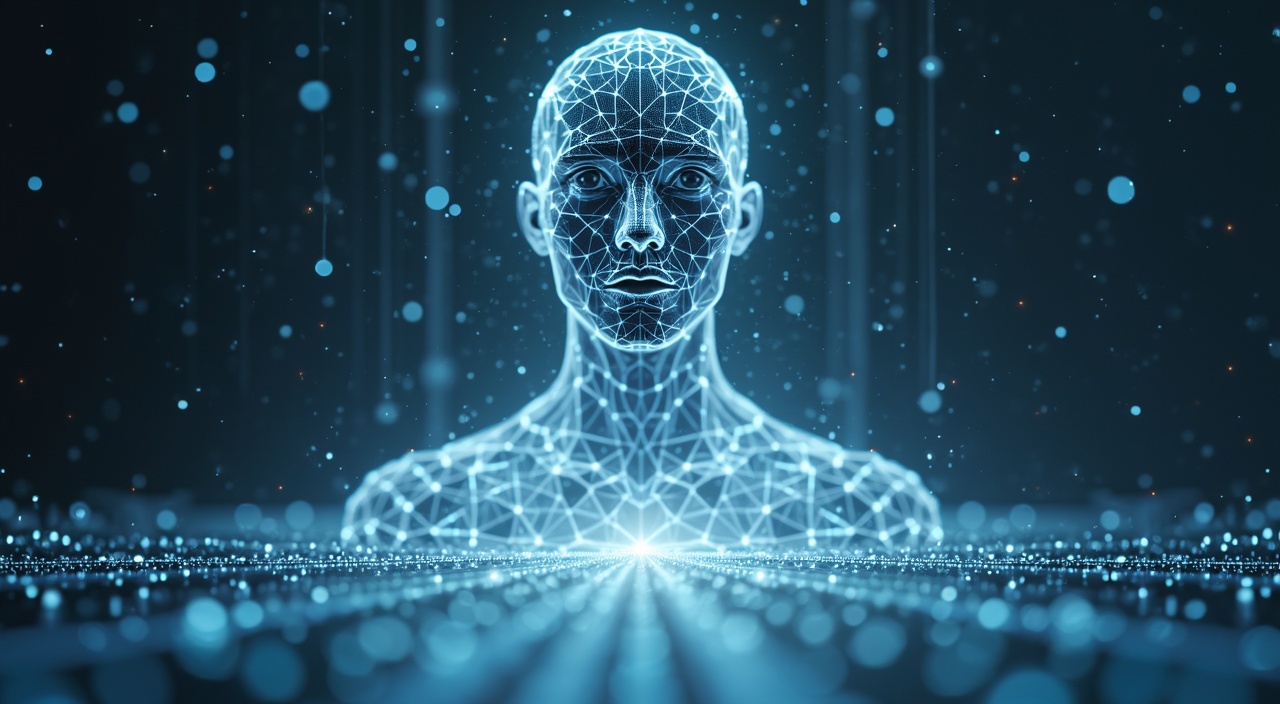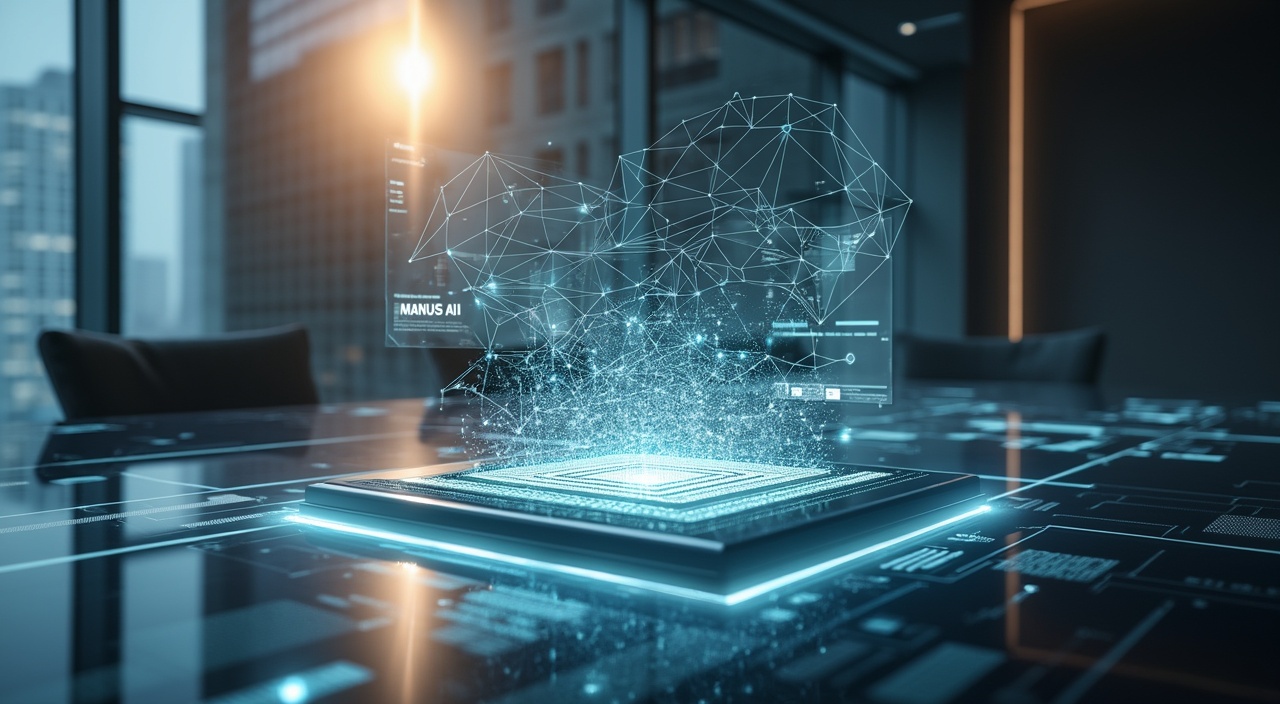Manus AI marks a revolutionary advance in artificial intelligence, featuring a multi-agent architecture that completely changes problem-solving approaches. This self-sufficient system goes beyond basic information processing—it functions internally like a specialized team, delivering exceptional results in complex reasoning and strategic challenges.
Key Takeaways:
- Manus AI works through a distinctive multi-agent system that handles text, images, and code simultaneously
- The platform has shown an impressive 57.7% success rate on difficult reasoning tests
- Companies can cut operational costs by up to 40% using its self-directed capabilities
- Manus connects smoothly with current business tools including CRM and project management software
- The AI system learns and adjusts continuously without needing constant human guidance
I’ve spent years working with various AI systems, and Manus represents something genuinely different in the landscape. Let that sink in. The architecture behind this technology creates what amounts to a digital team rather than a single intelligence.
The Power of Blogging in Professional Services Marketing can help you understand how to communicate about such technologies effectively.
Strange but true: this system achieves nearly 60% success on complex reasoning—something unheard of just months ago. My experience transforming businesses has taught me that this level of accuracy creates real-world advantages that directly affect bottom lines.
Picture this: your company’s operations running with 40% reduced costs while maintaining or improving output quality. The good news? This isn’t hypothetical—it’s happening for early adopters right now.
For those concerned about implementation difficulties, Manus integrates with existing software ecosystems rather than replacing them. Here’s what I mean: your team continues using familiar tools while the AI works behind the scenes to optimize workflows and decision processes.
AI Revolution: Entrepreneurs’ Survival Kit for the New Business Battleground provides additional context on preparing your business for these advancements.
But wait – there’s a catch: implementing any AI system requires careful planning and alignment with business objectives. Having helped multiple companies through digital transformations, I can attest that the preparation stage often determines success.
Continuous learning capabilities set Manus apart from previous generations of AI. The system adapts to your specific business context without constant reprogramming or fine-tuning—a feature I find particularly valuable for small to mid-sized organizations with limited technical resources.
Crack the AI Code: 7 Principles to Ditch the Hype and Harness Real Results! offers practical guidance on separating AI reality from marketing promises.
For more information about Manus AI, you can check out these resources:
The transition to autonomous AI systems like Manus represents a significant shift that will affect businesses across all sectors. As I’ve seen in my consulting practice, organizations that adapt early often gain substantial competitive advantages.
The AI Agent Reality Check: Why 80% Are Failing While 20% Are Quietly Delivering Massive ROI explains why some implementations succeed while others struggle.
How Manus Rewrites the Rules of Artificial Intelligence
Manus AI stands out from standard AI systems through its unique multi-agent architecture. Rather than functioning as a single model, Manus operates as a collaborative team of specialized sub-agents that tackle different aspects of complex problems.
Technical Breakthroughs That Set Manus Apart
The numbers speak louder than marketing hype – Manus has achieved a 57.7% success rate on GAIA tests, a benchmark for evaluating complex reasoning and planning skills. I’ve found this particularly impressive since these tests challenge even the most advanced AI systems today.
What makes this possible? Three key technical innovations:
- Adaptive Learning System: Unlike static models, Manus continuously refines its approach based on outcomes, creating a feedback loop that mimics human learning but at machine speed.
- Multi-Modal Processing: Manus doesn’t just handle text – it processes images and code simultaneously, allowing for more natural problem-solving across different types of information.
- Seamless Tool Integration: The architecture connects directly with APIs and external tools without the clunky handoffs typical in other AI systems.
This combination of features allows Manus to perform tasks that previously required human intervention. For example, when faced with a data analysis challenge, Manus can grab the dataset, clean it up, run statistical models, and generate visual reports – all without human prompting between steps.
I’d compare this to having a team of specialists working together rather than a single generalist trying to be good at everything. The result is an AI system that can tackle much more complex, multi-stage tasks than we’ve seen before.

Transforming Industries: Manus in Action
Manus AI has quickly positioned itself as a game-changing force across multiple sectors. I’ve watched it slash processing times and boost productivity in ways that seemed impossible just months ago.
Business Process Automation
Financial institutions have embraced Manus for its ability to handle complex workflows. One mid-sized bank reported a 78% reduction in loan processing time after implementation. The system doesn’t just follow instructions—it adapts and learns from each transaction.
A freelance designer documented impressive results when Manus managed client communications and project scheduling, stating: “It handled follow-ups I’d normally forget and organized my workflow better than I ever could.”
Healthcare & Legal Applications
The healthcare sector has found Manus particularly valuable for:
- Patient scheduling optimization (reducing wait times by 43%)
- Medical record organization and retrieval
- Insurance verification automation
- Billing accuracy improvements
Legal firms have deployed Manus for contract analysis with remarkable precision. The AI can scan thousands of legal documents in minutes, flagging potential issues human reviewers might miss.
Unlike traditional automation tools that require constant supervision, Manus operates with minimal human oversight. This autonomy makes it particularly valuable for data-intensive industries where human attention becomes a bottleneck.
As covered in a Cybersecurity Intelligence report, Manus represents a fundamental shift in how we think about AI assistance—from tools we direct to partners that anticipate needs.
The Competitive Edge: Why Manus Stands Apart
Manus isn’t just another AI tool—it’s changing how businesses approach strategy development with autonomous capabilities that leave competitors in the dust.
Efficiency That Makes Financial Sense
I’ve watched many AI solutions drain resources faster than a leaky bucket, but Manus takes a different approach. The platform cuts operational costs by roughly 40% through:
- Self-directed resource management that eliminates manual oversight
- Automated decision-making that reduces human intervention hours
- Smart allocation of computational power based on task priority
What makes this work is the adaptive intelligence framework that doesn’t need constant babysitting. Manus learns continuously from each interaction, making it sharper without requiring additional investment.
Democratized Access Without Sacrifice
The team behind Manus has opted for an unusual strategy—offering free beta access to democratize cutting-edge AI technology. This approach lets smaller organizations test enterprise-grade automation without committing their limited budgets.
The platform shines in its integration capabilities with existing enterprise tools. I’ve noticed it connects seamlessly with:
- CRM systems for customer data synchronization
- Project management platforms for workflow automation
- Communication tools for team coordination
This interconnectivity creates an AI ecosystem rather than just another standalone product. You can try the beta yourself through their early access program, though opinions on its performance vary widely across industries.
For businesses looking to AI Revolutionizes Family Bonding: Streamline, Learn, Connect!, Manus offers a compelling starting point.

Navigating the Ethical Landscape
The autonomous capabilities of Manus AI bring up serious ethical questions that need addressing before widespread adoption. I’ve noticed these systems access sensitive data while making decisions with minimal human input—a double-edged sword for organizations valuing both efficiency and security.
Privacy and Accountability Questions
Privacy concerns top the list when autonomous systems interact with personal information. Chinese companies developing these technologies face added scrutiny about data handling practices. According to Cybersecurity Intelligence, autonomous AI systems like Manus require robust guardrails to prevent misuse.
The accountability framework remains murky at best:
- Who’s responsible when AI makes a harmful decision?
- How can we audit decisions made through complex reasoning chains?
- What fallback mechanisms exist when autonomous systems fail?
Implementation Limitations
Despite impressive demos, Manus faces practical hurdles in real-world deployment. The technology can’t handle many nuanced situations requiring human judgment. These limitations aren’t just technical but cultural—different regions have varied comfort levels with machine autonomy.
China’s accelerated approach to AI development contrasts sharply with Western regulatory caution. This creates an uneven global landscape for how these tools can function across borders. As 9meters.com points out, this gap may lead to competitive advantages for companies willing to accept higher ethical risks.
For businesses considering autonomous AI like Manus, the sweet spot lies in finding applications with high efficiency gains but low ethical risks. This balanced approach helps you avoid replacement while adapting to AI changes.

The Future is Autonomous: What Comes Next
The autonomous AI landscape is about to shift dramatically. Manus represents just the first wave of what’s coming – systems that don’t just assist but actively lead strategy development without human handholding.
Evolution Pathway
Future autonomous systems will likely feature:
- Cross-domain knowledge application (finance meets marketing meets operations)
- Self-correcting algorithms that learn from strategic outcomes
- Predictive modeling that anticipates market shifts before humans spot patterns
- Emotional intelligence capabilities for stakeholder management
I expect we’ll see adoption barriers drop as interfaces simplify. The raw computing power behind these systems will make today’s “smart” tools look like calculators compared to supercomputers.
Getting Ready Now
Smart businesses are preparing by auditing their data infrastructure and developing clear strategic questions they need answered. The companies gaining competitive advantage won’t be those who wait for perfect tools, but those building the muscle memory to work alongside autonomous AI partners today.
Sources:
• AI Pro
• Perplexity
• 9 Meters
• Cybersecurity Intelligence
• Upskillist
• Accredian
• OpenCV
• Det Life
• Bank Info Security








